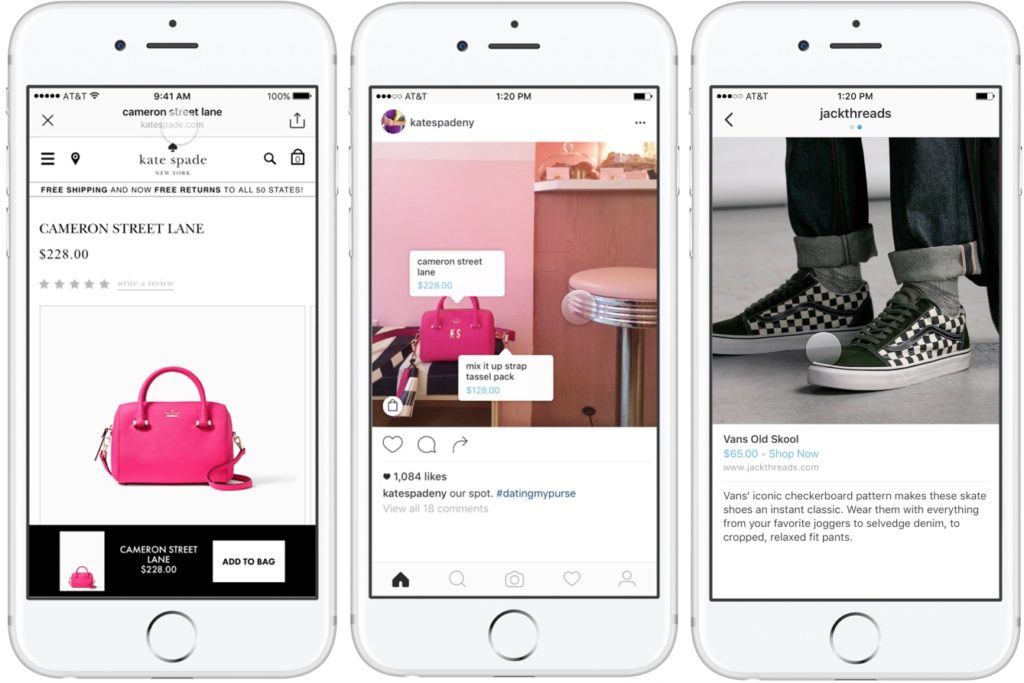Analysis
Could Instagram’s Shoppable Tags Further Transform the Art Market?
See what dealers and artists have to say.

See what dealers and artists have to say.

Brian Boucher

Collectors like Leonardo DiCaprio have bought art they first saw on Instagram; auction house executives like Christie’s Brett Gorvy use the app to show off their new consignments; artists employ it to sell directly to buyers, cutting out the middleman of the art gallery.
But Instagram’s latest feature, which goes into testing with 20 retailers next week, could foretell further changes for some sectors of the art market.
If you follow brands like Kate Spade, J. Crew, or Warby Parker, you’ll see a “tap to view products” button. You no longer have to follow a link in the vendor’s bio or open a separate browser window to try to track down information on a purse or a pair of old-school Vans.
Assuming it’s successful, could artists and galleries eventually use this feature to sell art? A few dealers and artists who talked to artnet News were of mixed minds, though even the skeptical ones tipped their hats to Instagram’s power to generate buzz.
“The ways Instagram has changed the art world are actually underestimated,” says Lauren Marinaro, director/partner at New York gallery Feuer/Mesler. “In the case of the Loie Hollowell show we have on right now, almost every person coming in, including big-time collectors, says they’ve seen a lot of it on Instagram. That’s the first thing they say.”
Of course, nothing beats seeing a unique work of art in person, and Marinaro points out that when collectors are considering works in the range of many thousands of dollars, they are unlikely to skip conversations with the dealer and the artist. “For print sellers, maybe the button would work,” she said.
Others agree that it might work best for low-end works in large editions.
“I don’t think click-for-purchase Instagram tags are applicable to art in particular,” said collector/dealer/advisor Stefan Simchowitz in an email. “The complexity of the art transaction and lack of simplicity will only make it possible for art-related products like prints and posters,” he writes, neglecting to mention that most people consider prints to be art.
Kevin Scholl, sales director at Susanne Vielmetter Los Angeles Projects, partly agrees.
“We continue to use Instagram, Facebook, and Twitter to share images of work and exhibitions,” he said, “more as a way of giving our followers day-to-day insight into the gallery.” Vielmetter does not use online sales platforms, he said, because “we prefer the longstanding relationships with our collectors that are built on in-person conversations at the gallery, at fairs.”
As for shoppable tags, he said, “It’s something we would keep an eye on, but are not likely to jump on right away. Our priority is to do our best by our artists—mindfully placing their works—and we wouldn’t want to sacrifice this for the sake of immediate sales.”
Other dealers are similarly wary but open.
“I realize the potential power of shoppable tags and social reach in the art market,” said Rachel Gonzales, artist liaison at Kavi Gupta Gallery (Chicago).
“We do a lot of sales via social and web, especially in the run-up to art fairs. Of course the gallery visit itself has a major impact in experiencing art first-hand, but taking the tangible to the digital realm presents buying opportunities you can’t get in the gallery or a fair. As long as the artist is comfortable with shoppable tags, I would consider them, because Instagram, it’s kind of sad, but it’s become part of my daily routine.”
Artists who use the app to sell work are also of two minds.
Toronto artist Chris Austin, known for imagery of bears and aquatic animals, sells work at a rapid clip to his 15,000 followers, who email him about buying studies in the price range of $100–$200 within minutes of his posting them.
https://www.instagram.com/p/BMPOsqzBBPM/
“It’s hard to say” whether he could make use of a “buy now” button or the like, he said in an email, acknowledging that he could imagine it reducing administrative hassles, but adding that “that seems a long way off.” In the meantime, he’s already making as much as a quarter of his income on sales originated via the app, and has sold works for as much as $1,400 there.
New Orleans artist Ashley Longshore got more futuristic, speaking by phone. She had already gained notice in Vogue two years ago for selling artworks for upwards of $30,000 to clients as tony as Switzerland’s Serene Highness Pierre d’Arenberg using the app. Echoing Susanne Vielmetter’s Kevin Scholl, she, too, said that conversations and relationships are key, and poo-pooed the idea of a “buy now” button.
But then again, she said, who knows?
“We’ll see how it all progresses. Maybe that button will turn into a live, full-on, 3D show, where I can tell you a story. Five years from now, you and I could be having a hologram conversation.”